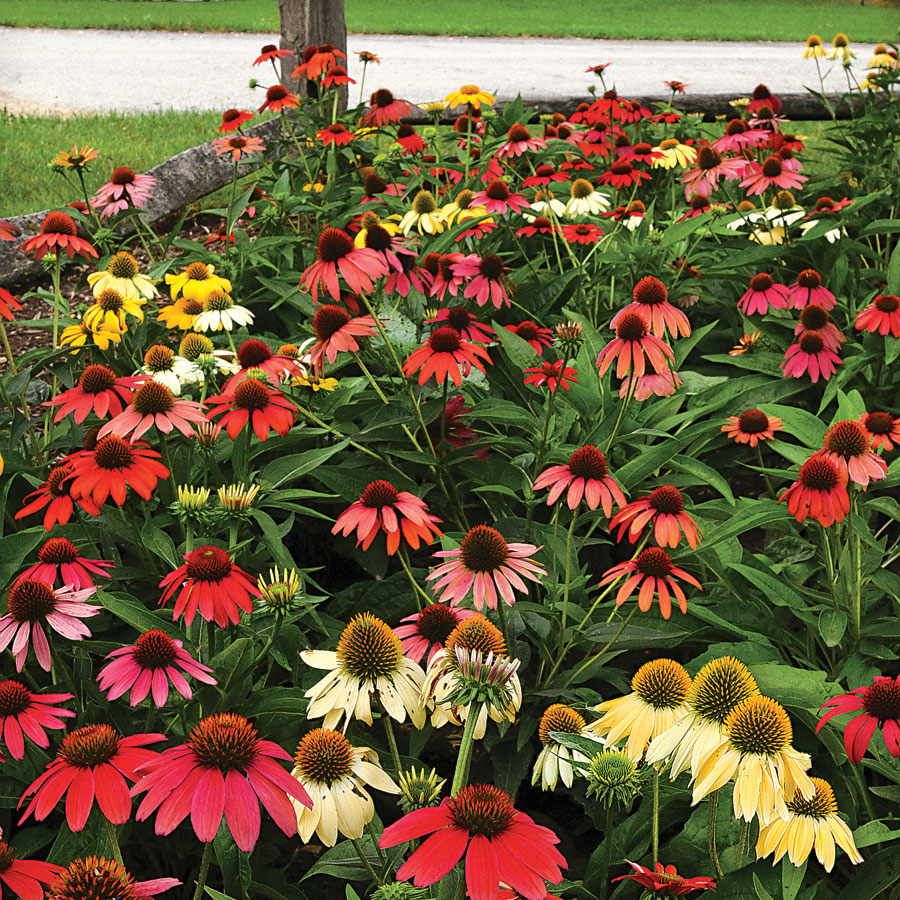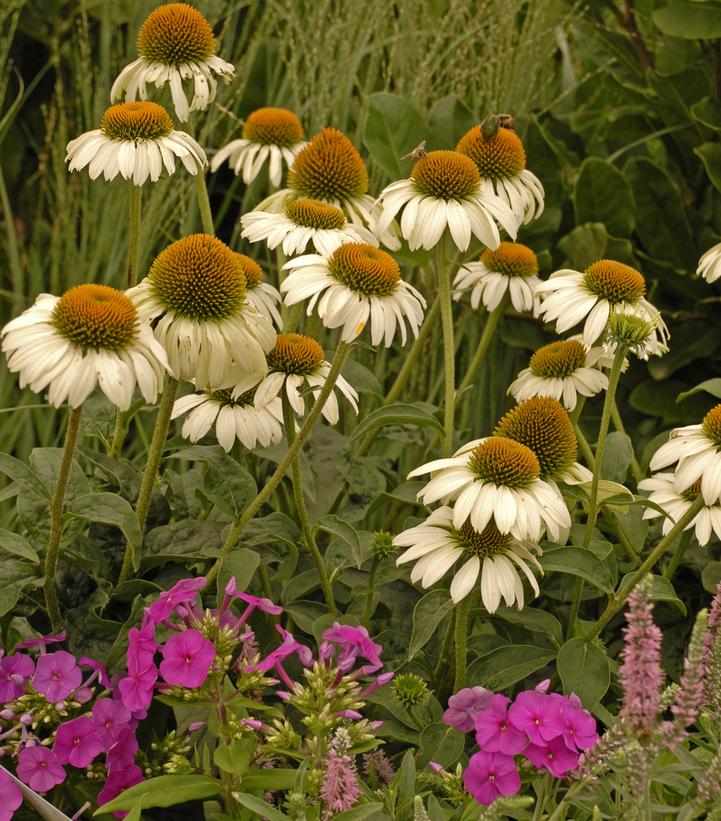12 Low-Maintenance Perennials: Foolproof Plants Absolutely Anyone Can Grow
Absolutely anyone can grow these low-maintenance perennials! Find out which foolproof plants to add to your garden for years of beautiful blooms.

Laura Walters
Low-maintenance perennials are the workhorses of the garden. They provide years of beautiful blooms with minimal effort. They’re ideal for beginner gardeners, but seasoned growers benefit from their ease of care as well.
This list was carefully selected based on 25 years of personal gardening experience, as well as insights from fellow gardeners. So whether you're a long-time gardener or just starting out, these plants are perfect for anyone—no green thumb needed!
Lovely, Low-Maintenance Perennial Flowers
This list includes plants that are not only easy to grow but heat and drought-tolerant as well as pest, disease, and deer resistant. Here are our top picks for low to no-maintenance perennials:
1. Coneflower
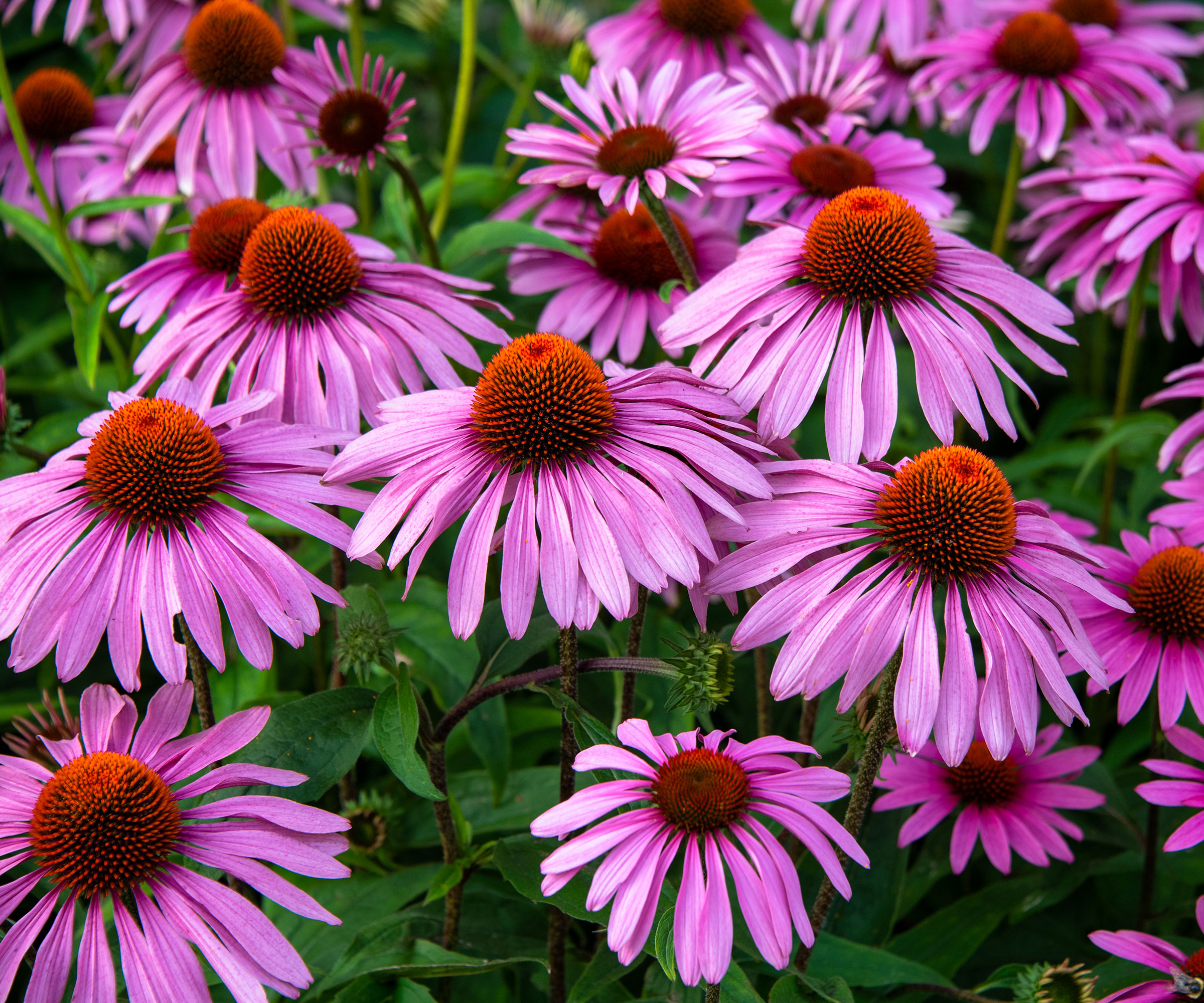
- Zones: 3-9
- Expert tip: Leave seed heads for birds as a source of food in winter.
Echinacea, or purple coneflowers, are hardy plants that adapt to various soil types and thrive in full sun to partial shade, even in dry or poor soils. Established plantings of drought-tolerant perennials like echinacea don’t usually require additional water unless they show signs of stress. This versatility makes them an excellent choice for tough garden conditions.
If you’re searching for a specific flower hue for your beds, coneflowers are the plant to consider. Their daisy-like flowers with cone-shaped centers come in a wide array of colors including red, pink, purple, yellow, white, and even bicolor. These nearly no-maintenance perennials are a favorite of birds. Plus, after their petals fall the cones add great texture to the landscape.
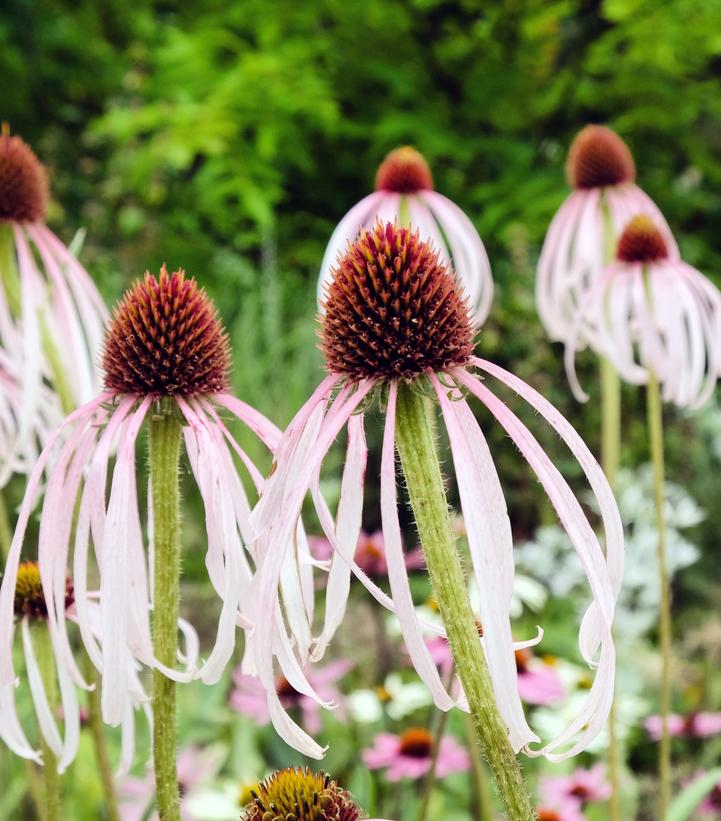
You'll love this variety for its shorter, denser form and unsurpassed blooms that will don your garden from May through July.
2. Allium
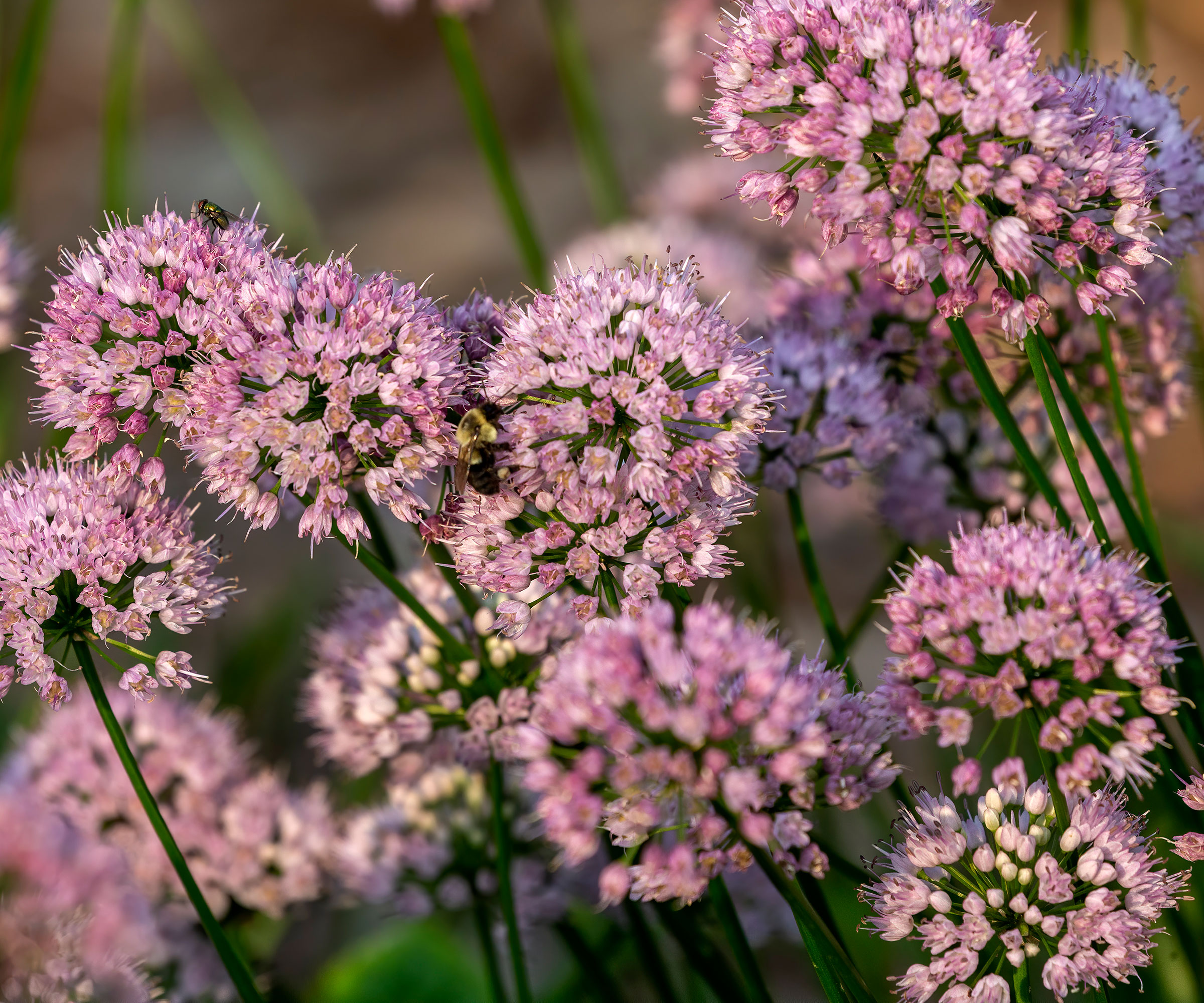
- Zones: 4-8
- Fun fact: Allium 'Millenium’ won the Perennial Plant Association’s Plant of the Year award in 2018.
One of my favorite perennial plants of all time is the ornamental allium. This perennial provides great presence through the hottest part of the summer with its clean green foliage and abundance of globe-shaped blooms that honeybees and other pollinators absolutely adore.
Its oniony scent repels pests and grazing animals, like rabbits and deer. These hardy plants are not only resistant to pests and diseases but thrive in well-drained soil and full sun, making them one of the easiest perennials to grow.
Gardening tips, videos, info and more delivered right to your inbox!
Sign up for the Gardening Know How newsletter today and receive a free copy of our e-book "How to Grow Delicious Tomatoes".
3. Bee Balm
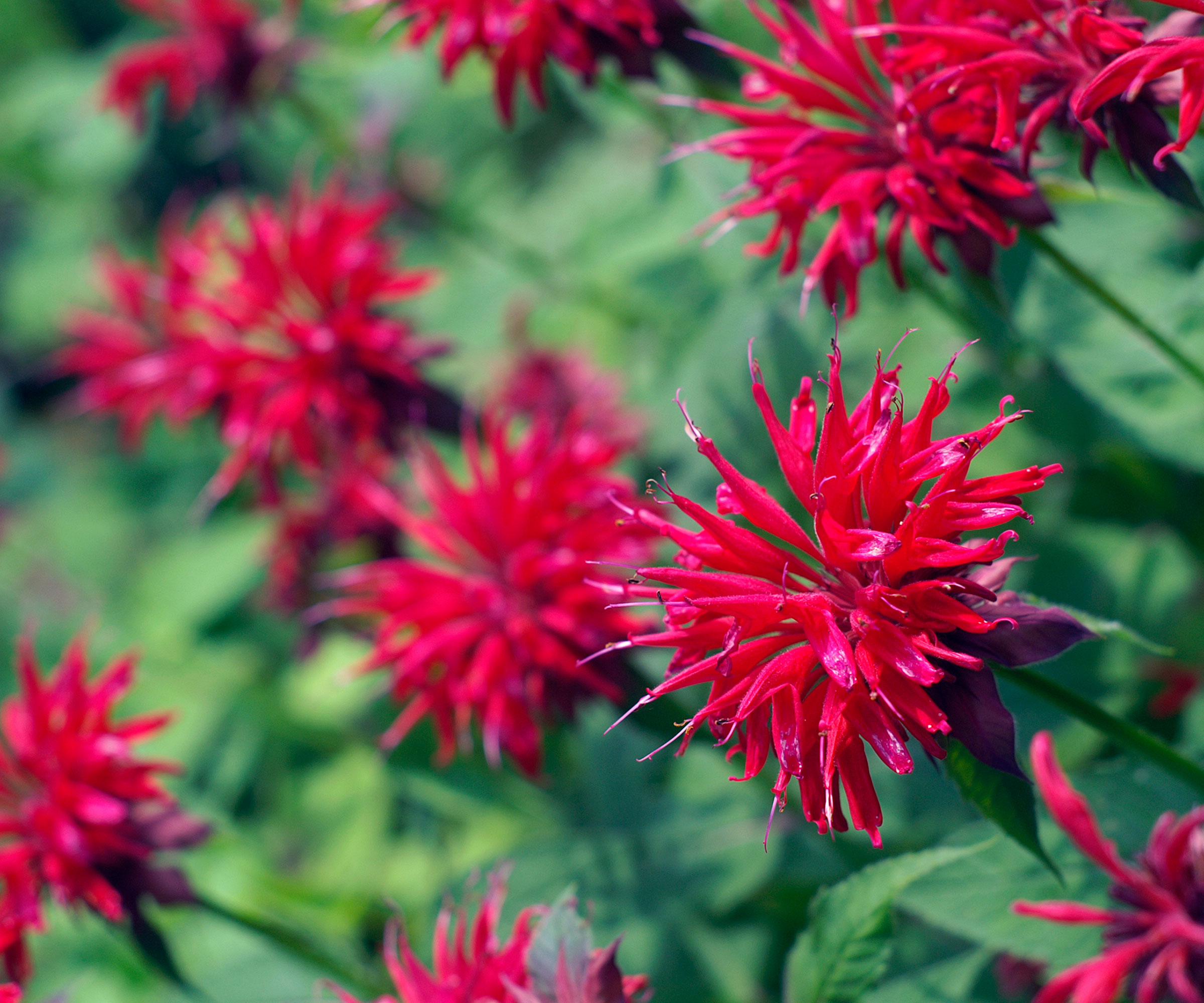
- Zones: 4-8
- Fun fact: The aromatic foliage smells like mint when crushed and is often used to flavor teas.
If attracting hummingbirds and butterflies is on your radar, then bee balm is a must. Bee balm, also known as Monarda or bergamot, is an easy-to-grow perennial that thrives in a variety of soil types and prefers full sun to partial shade, making them adaptable to different garden conditions.
The native plant’s striking, tubular flowers come in hundreds of varieties in shades of red, pink, purple, and white. Their aromatic foliage and resilience to both drought and pests add to their appeal, making bee balm an easy choice for any low-maintenance garden.

'Blue Stocking' is a perfect plant for grouping in the back of any garden in sun or partial shade and is more mildew tolerant than many varieties.
4. Catmint
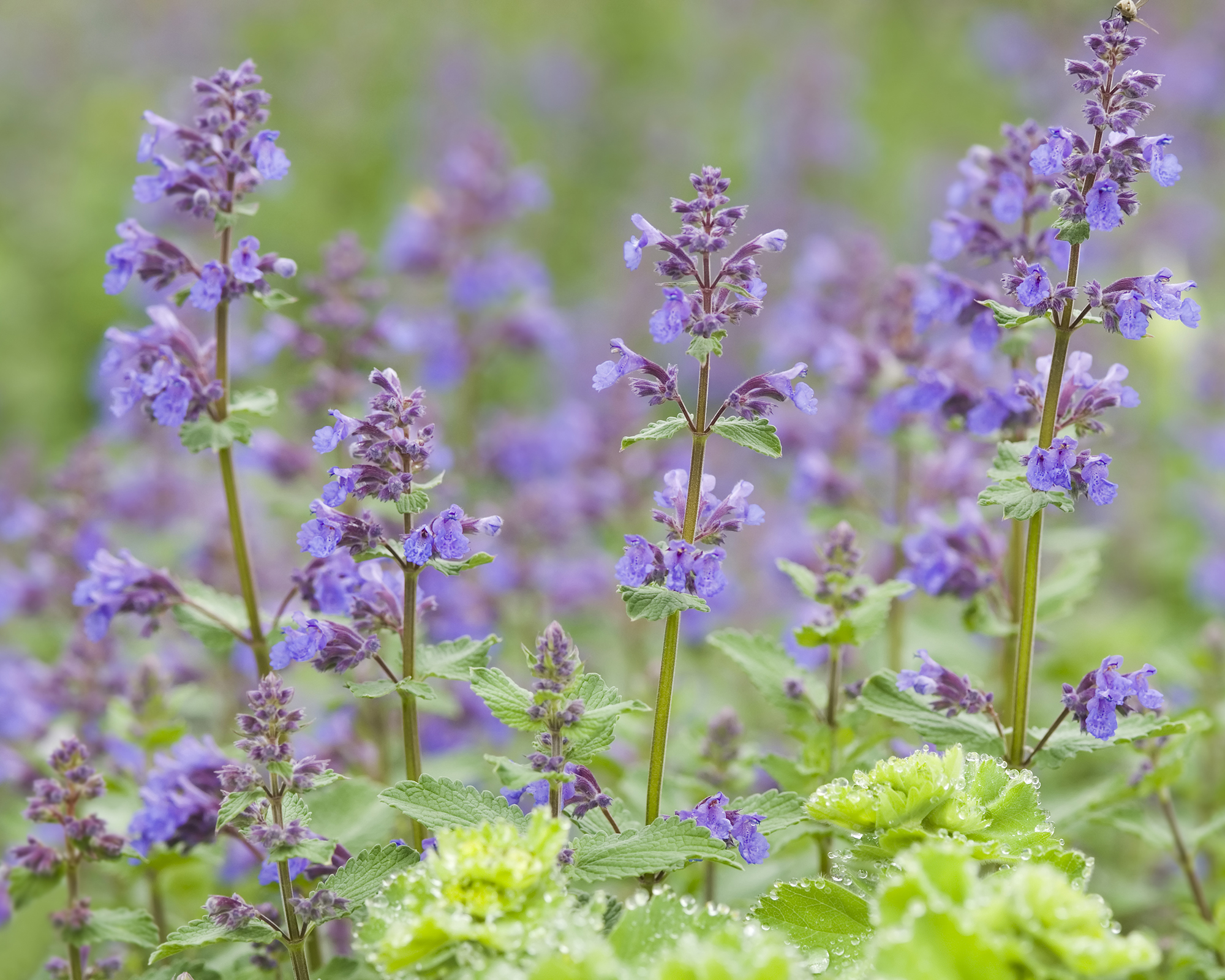
- Zones: 3-8
- Expert tip: Shear the plants back by half after their first bloom cycle to stimulate a second bloom.
Aromatic foliage, an easy nature, and a long bloom time…what’s not to love about catmint? These nearly no-maintenance perennials are celebrated for their resilience. They thrive in a variety of soil types and light conditions, from full sun to partial shade. Their drought-tolerance and low-maintenance needs make them ideal for gardeners seeking a hassle-free plant.
Spikes of small, lavender-blue flowers add a charming touch to garden beds and borders. Catmint’s ability to repel certain pests and attract beneficial pollinators like bees and butterflies raises its value in the garden.
5. Black-Eyed Susan
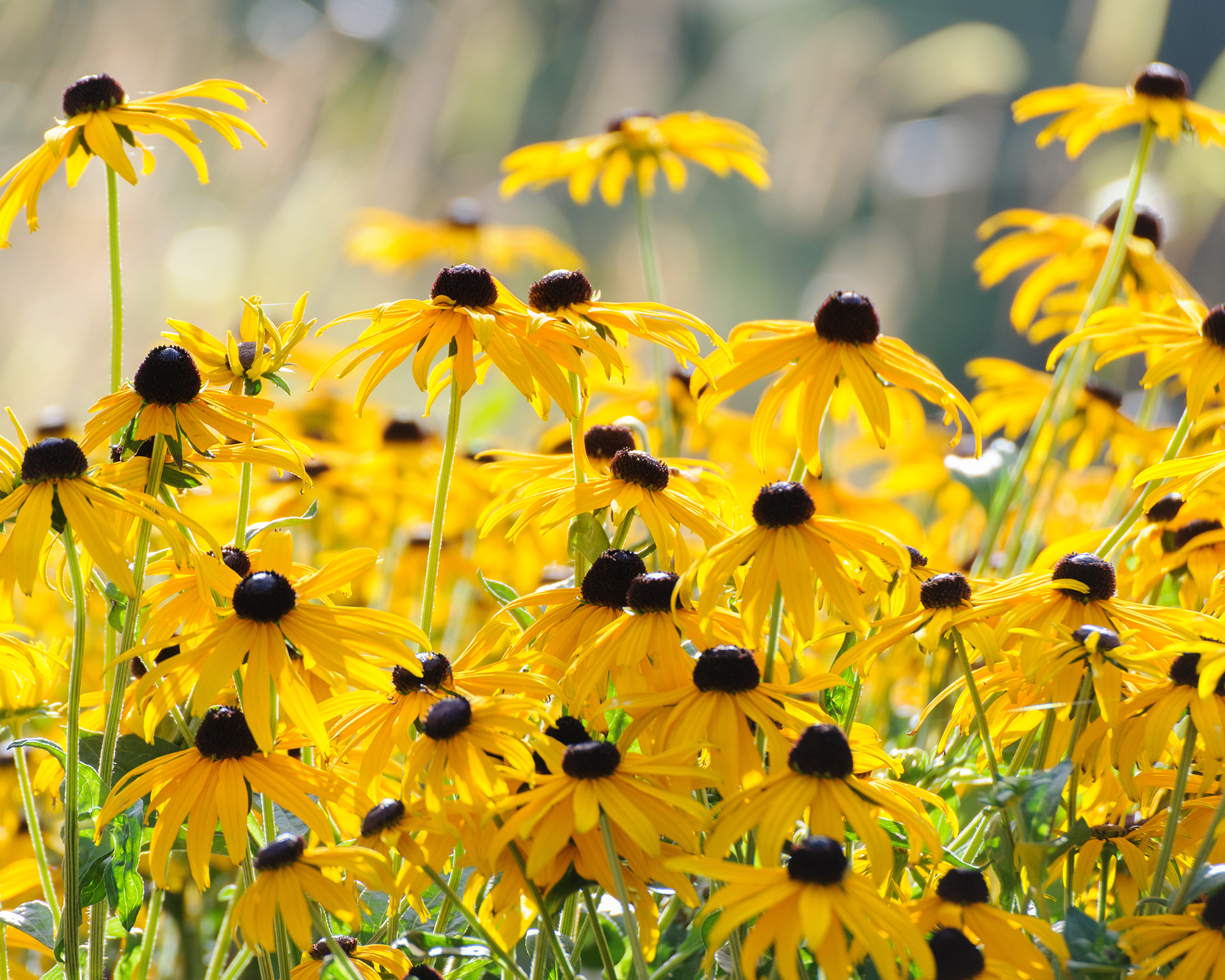
- Zones: 4-10
- Expert tip: Don’t deadhead if you want winter interest. Seed heads remain attractive throughout the winter and provide a source of food for small birds.
The black-eyed Susan is a versatile, heat and drought-tolerant perennial that every gardener should include in their landscape. These hardy plants thrive in a variety of soil types and adapt well to both full sun and partial shade.
Known for their cheerful yellow petals and dark centers, black-eyed Susans provide a burst of color that brightens garden beds from midsummer to fall. This dependable choice adds lasting color and ease to any garden.
6. Agastache
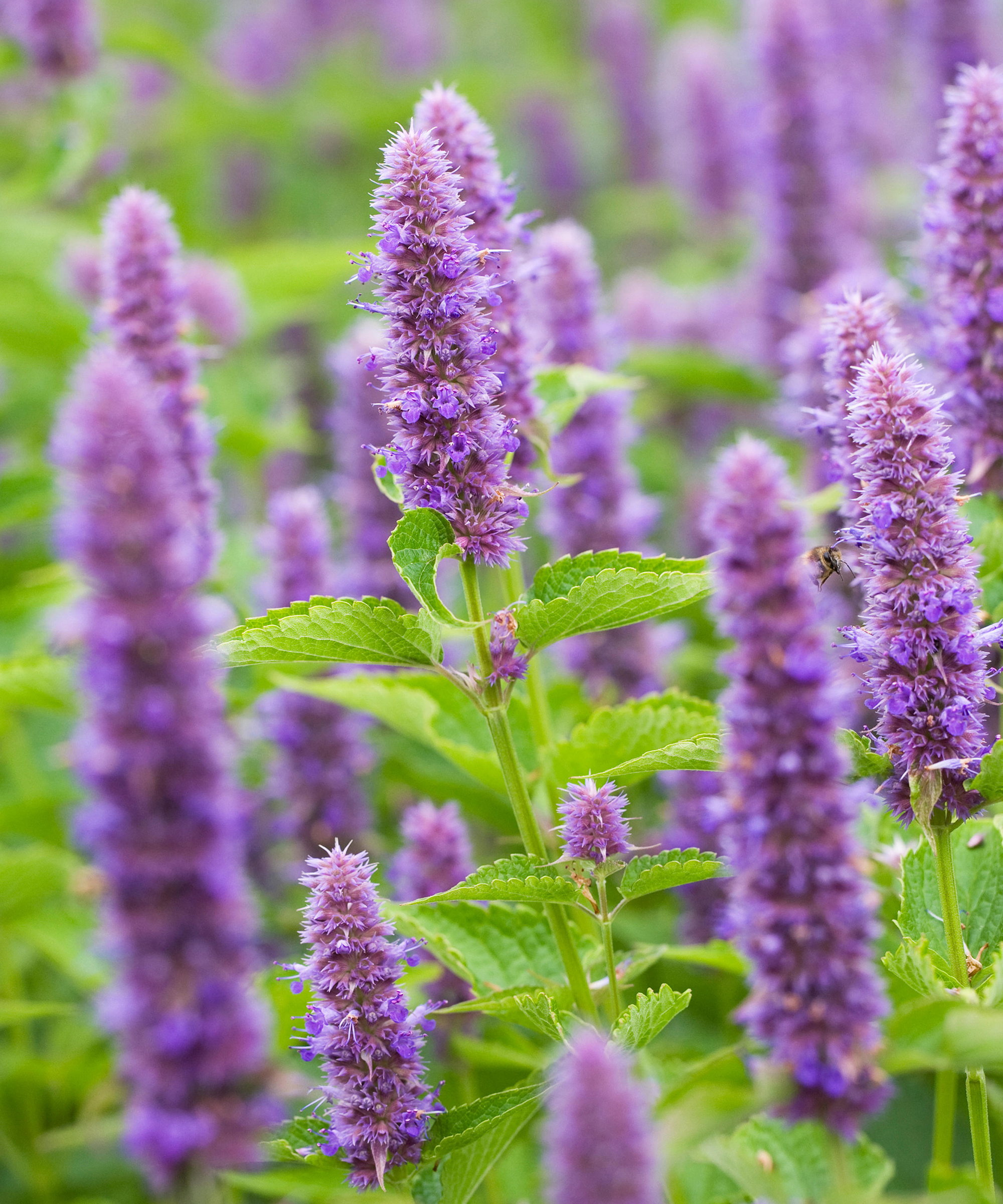
- Zones: 4-9
- Fun fact: The flowers and foliage have a subtle anise or licorice-like flavor.
Agastache, or anise hyssop, is native to the southwestern United States and Mexico. It’s one of the most rewarding and easiest perennials to grow. This sun-loving plant is resilient against drought and actually performs best in poor, dry soils.
Agastache produces tall, spiky clusters of colorful, long-lasting flowers in shades of purple, pink, orange, or white. They add both vertical interest and a splash of color to garden beds. Their fragrant leaves and flowers not only enhance the sensory appeal of your garden, but also attract a diverse array of pollinators, including bees, butterflies, and hummingbirds.
Buy agastache plants in the Gardening Know How Shop.
7. Baptisia

- Zones: 3-9
- Fun fact: Plants are very long-lived once established.
Baptisia, also known as false indigo, is an easy-to-grow native prairie plant that requires little to no maintenance. It works beautifully as a backdrop in borders or as a specimen plant. This low-maintenance perennial is known for its distinctive pea-like flowers that come in shades of blue, yellow, purple, pink, and white. These striking blooms sit atop tapering spikes that can reach a foot (.3 m) or more in length. Baptisia typically takes several years to establish before blooming, but it is worth the wait.
Even after bloom the black seed pods remain attractive well into winter. Their robust nature allows them to withstand drought and harsh conditions, making them a great choice for gardeners seeking resilience.
View baptisia plants for sale in the Gardening Know How Shop.
8. Liatris
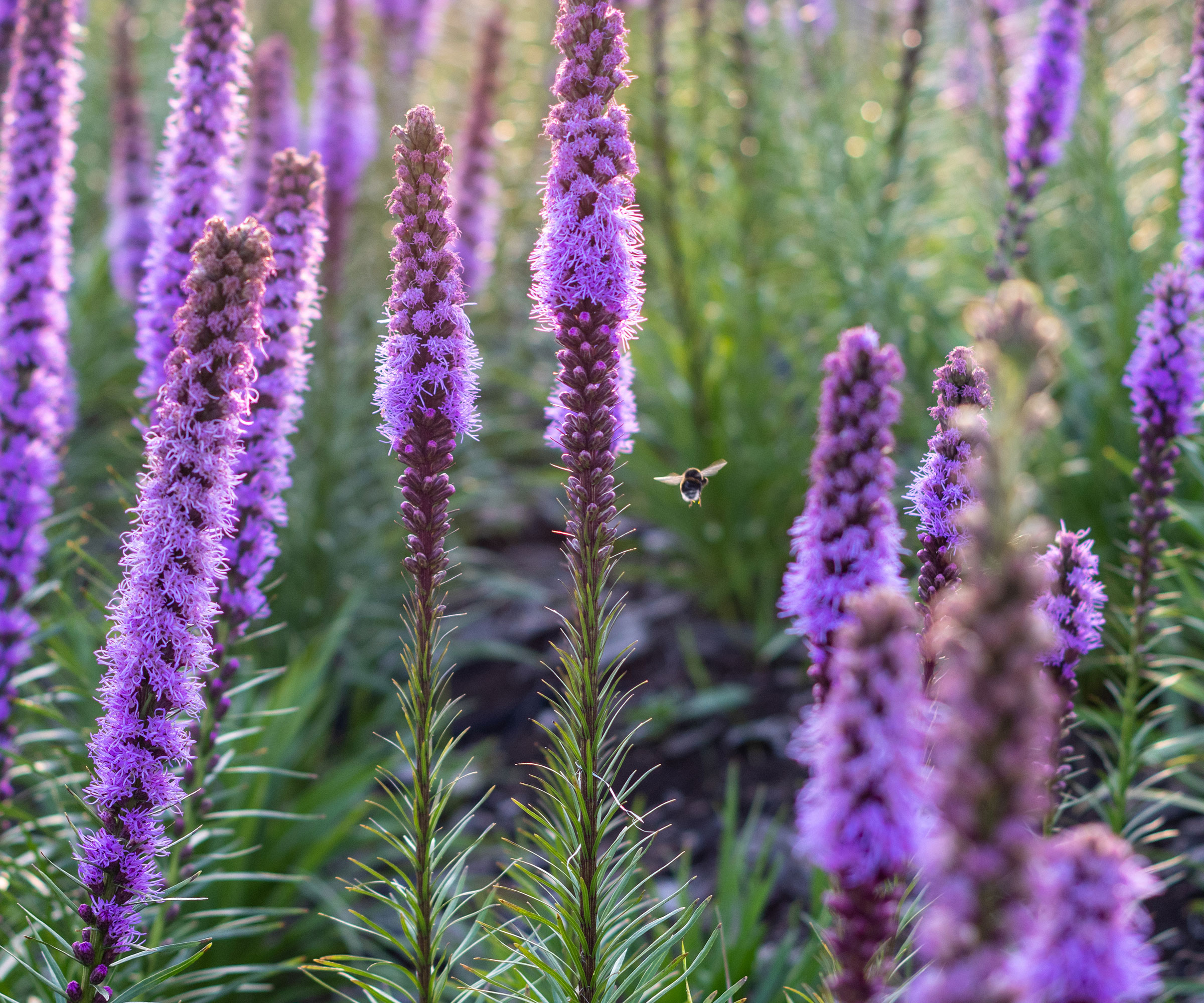
- Zones: 3-9
- Expert tip: Liatris makes an excellent cut flower. It adds a bright, vertical element to bouquets.
Liatris, also known as blazing star, is another wonderful low-maintenance perennial flower. This knockout native flower is a favorite among bees, butterflies, and hummingbirds. Pollinators are drawn to their vibrant flowers and nectar-rich blooms.
These hardy plants thrive in a range of soil types and are well-suited to full sun. Liatris features tall, feathery spikes of purple, pink, or white flowers that stand out beautifully against grassy foliage. Their long-lasting blooms and upright structure add vertical interest to garden beds and borders.
9. Sedum
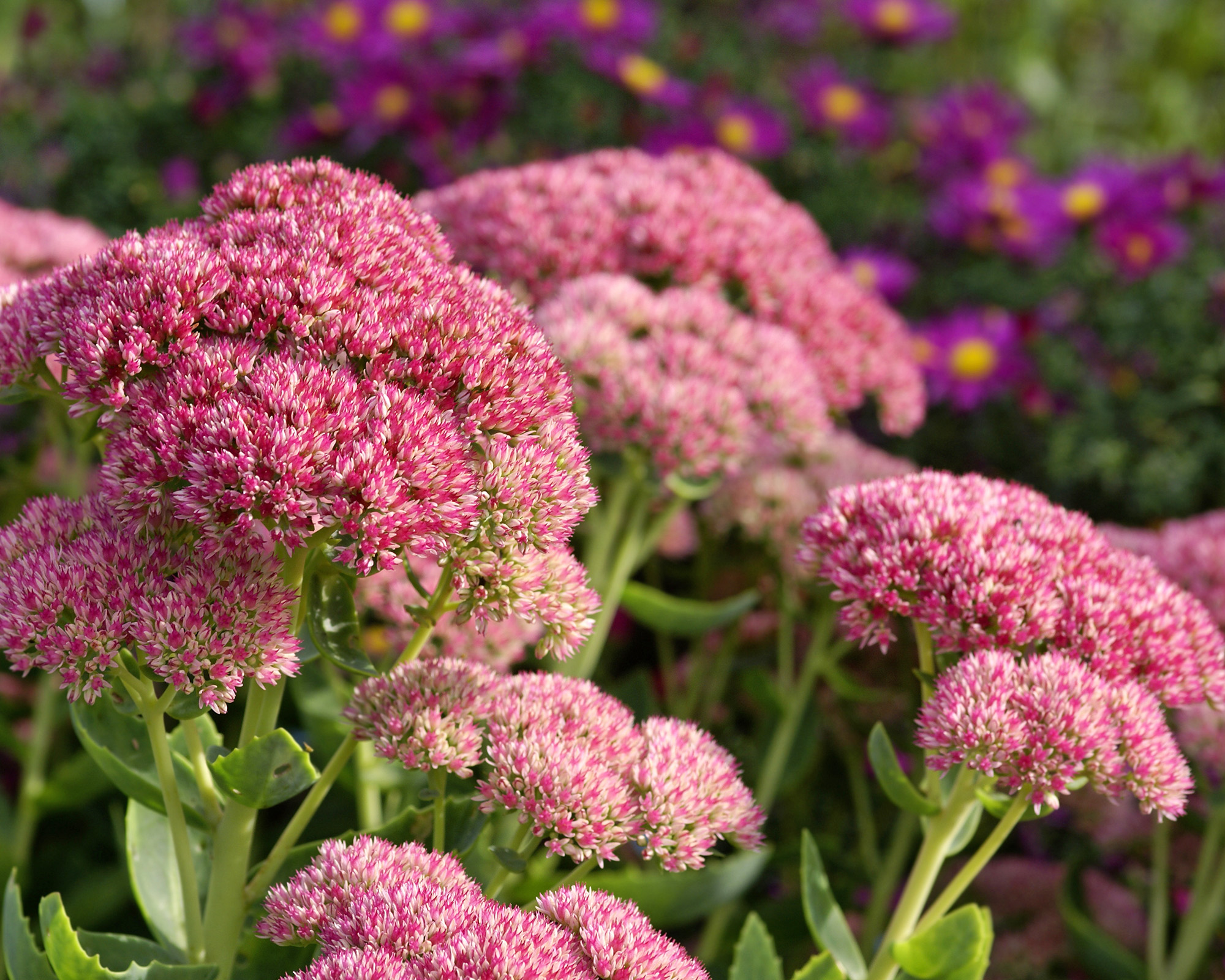
- Zones: 3-9
- Expert tip: The seed heads of the taller varieties provide excellent winter interest and food for birds.
Sedum, commonly known as stonecrop, are adaptable and hardy. From tall border plants to dwarf ground cover, there are types of sedum that can fill almost any garden need. Their versatility makes them ideal for both sunny and partially shaded spots.
Their fleshy, succulent leaves and clusters of star-shaped flowers provide interest all summer. Plus, their vibrant blooms often attract pollinators like bees and butterflies. With minimal water and care needs, they are excellent flowering perennials for pots, rock gardens, or use as a ground cover.
10. Astilbe
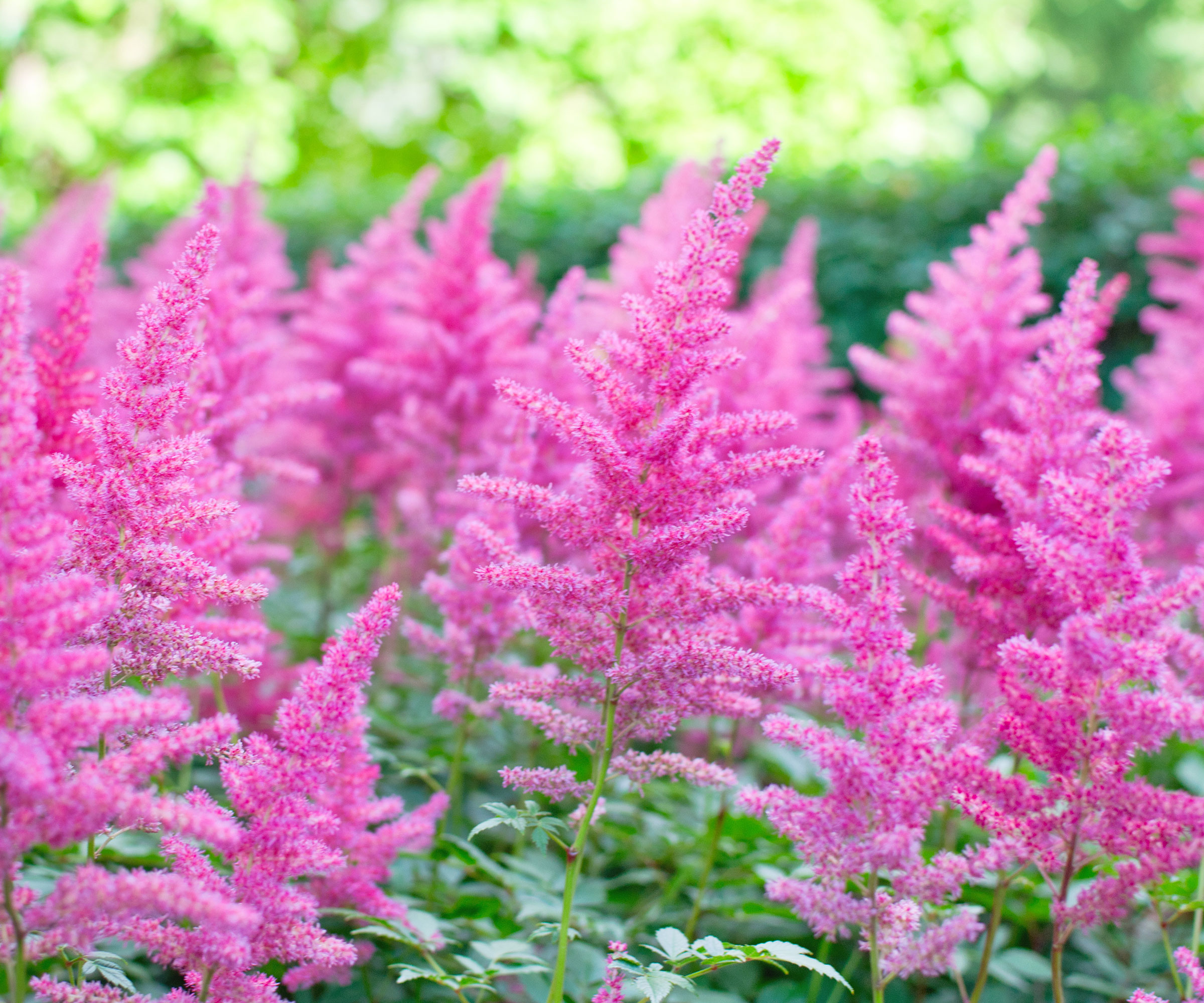
- Zones: 4-9
- Expert tip: Astilbe are resistant to grazing by deer and rabbits.
Astilbes are easy-to-grow perennials that bring vibrant color and texture to any garden with minimal effort. These hardy plants even thrive in shady areas, making them perfect for spots where other flowers might struggle.
I grow astilbes in both sun and shade, in both average to wet soils, and they seem to flourish no matter where I plant them. With feathery plumes of pink, white, and red flowers, astilbes add a touch of elegance and attract pollinators like bees and butterflies. Not only do they require little to no maintenance, but they are also pest and disease resistant.
11. Aster
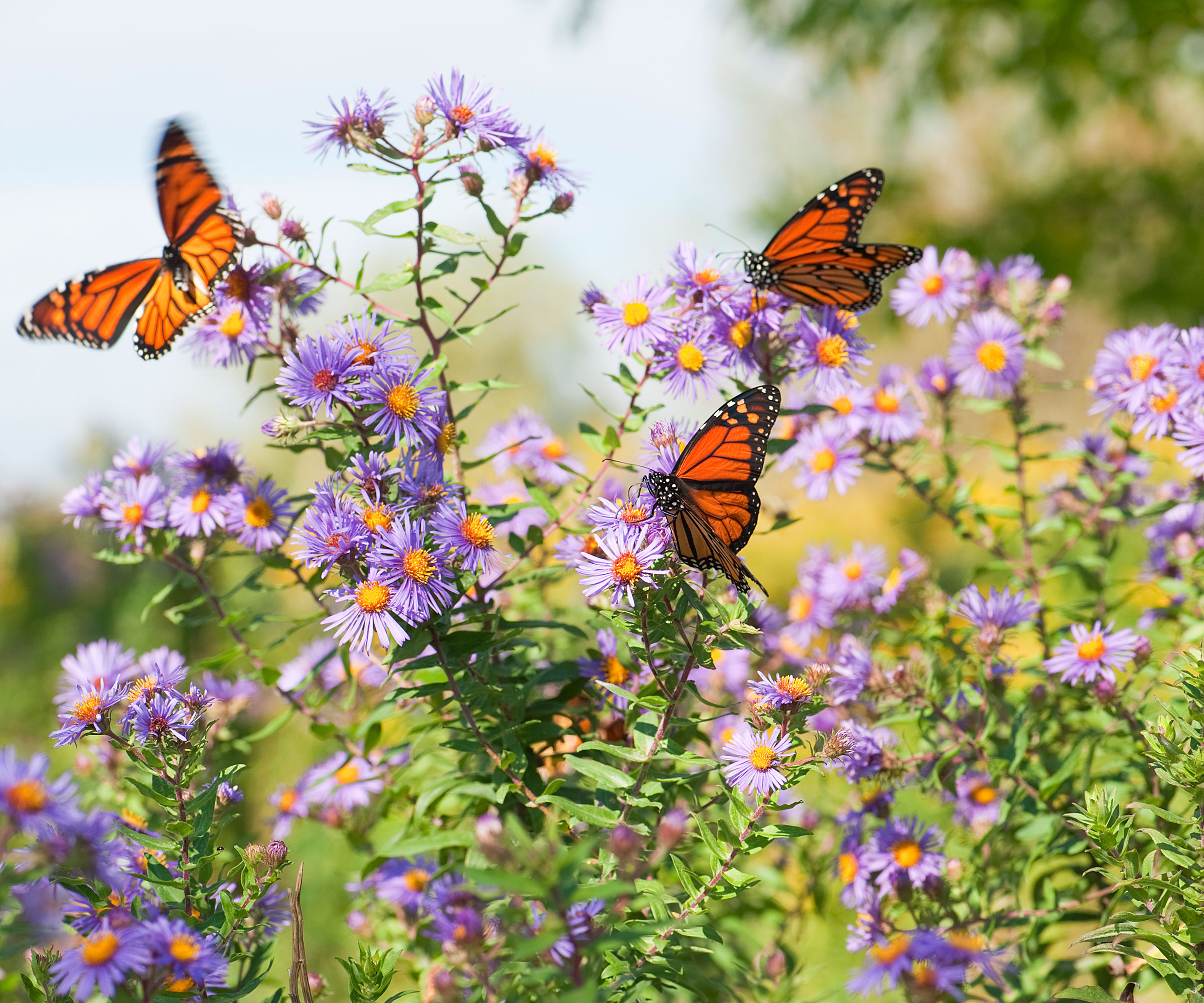
- Zones: 4-8
- Fun fact: The name “aster” comes from the Greek word for "star" due to their flowers’ stellar appearance.
Asters are the essential, easy-to-grow perennial for vibrant color in late summer and fall. These hardy plants thrive in a variety of soil conditions and are adaptable to both full sun and partial shade. They’re known for their stunning, daisy-like blooms that come in a range of colors, including purple, pink, blue, and white. Their blooms put on a striking show as many other plants begin to fade.
Their resilience and low-maintenance nature make them an excellent choice for gardeners looking for reliable, late-season blooms. Additionally, asters attract pollinators such as bees and butterflies.
Explore asters for sale in the Gardening Know How Shop.
12. Coral Bells
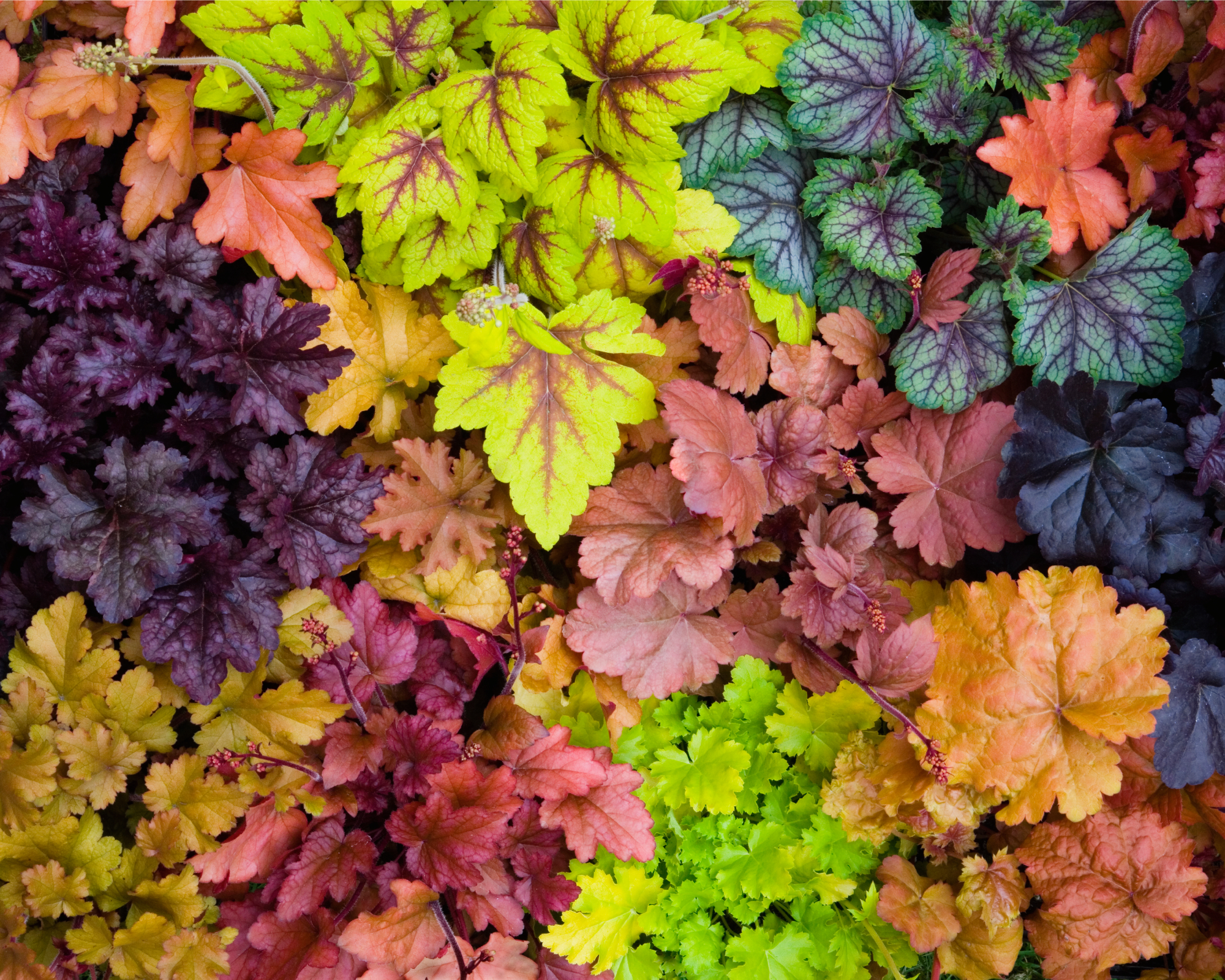
- Zones: 4-9
- Fun fact: Coral bells are evergreen in areas with mild winters.
Coral bells are exceptionally easy-to-grow perennials that provide a continuous display of color and interest. Their vibrant foliage comes in a variety of hues, including deep burgundy, purple, yellow, peach, bright lime green, and silver. You can grow these hardy plants in both sunny and shaded areas, making them versatile in many different garden settings.
These low-growing, low-maintenance perennials require minimal watering once established and are resistant to pests and diseases. Whether used as a border plant, ground cover, or in containers, coral bells effortlessly enhance your garden's appeal.
This article features products available from third-party vendors on the Gardening Know How Shop.

Amy Draiss, Digital Community Manager at Gardening Know How since 2021, seamlessly blends her hands-on gardening experience with a digital green thumb. With roots in family landscaping and management at a garden center, Amy has cultivated expertise in plants, supplies, and customer relations. Residing in the Midwest, Amy tends to her two-acre haven, showcasing a diverse range of trees, shrubs, and perennials. As the Hydrangea Queen, she shares her love for these blooms and imparts gardening wisdom through videos and social media. Beyond gardening, Amy enjoys quality time with her family, travel, and theme parks. Amy's mission is to inspire and advise plant enthusiasts, fostering flourishing gardens for both seasoned and budding gardeners alike.
- Laura WaltersContent Editor
-
 Looking For Plants To Give You The Soft And Fuzzies? Try These 5 Fuzzy Leaf Plant Options
Looking For Plants To Give You The Soft And Fuzzies? Try These 5 Fuzzy Leaf Plant OptionsLovers of texture, drama, silver foliage and tactile plants will adore these special sensory garden additions. These fuzzy leaf plant options will leave you all aglow
By Susan Albert
-
 Get Ready For A Summer Of Hummers! Grow These Full Sun Hummingbird Plants and Flowers
Get Ready For A Summer Of Hummers! Grow These Full Sun Hummingbird Plants and FlowersIf you’re lucky enough to enjoy a sunny backyard, make sure you are maxing out on your pollinator opportunities and grow these full sun hummingbird plants and flowers
By Tonya Barnett
-
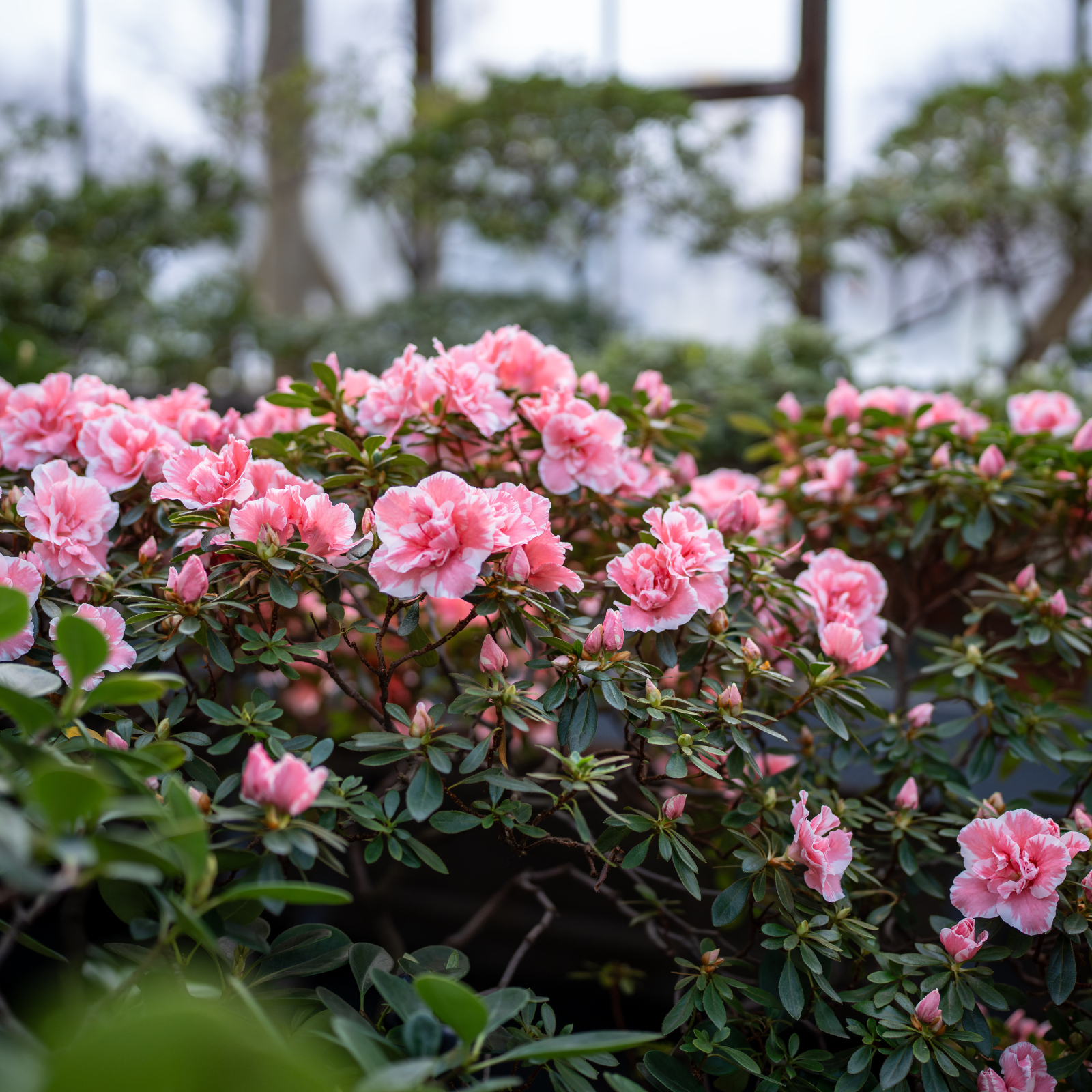 What Is The Size Of An Azalea? Explore Different Varieties That Will Suit Every Garden
What Is The Size Of An Azalea? Explore Different Varieties That Will Suit Every GardenThe size of azaleas can vary widely because they have been selectively bred for different landscape needs. Check out our picks for each size category.
By Mary Ellen Ellis
-
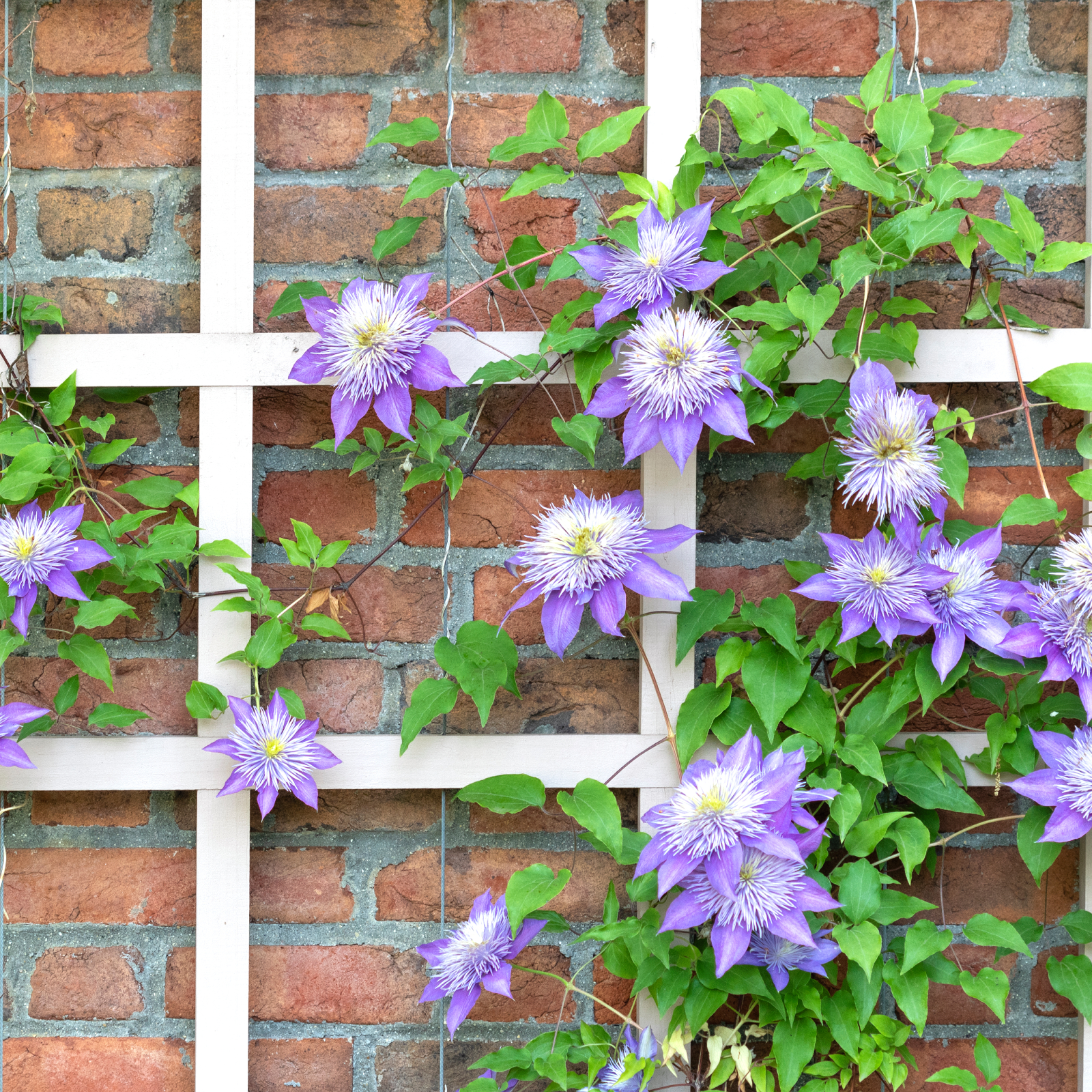 5 Fabulous Fast-Growing Vines – That Will Quickly Climb Any Arbor, Trellis, Or Fence
5 Fabulous Fast-Growing Vines – That Will Quickly Climb Any Arbor, Trellis, Or FenceThese fast growing vines are perfect for covering any eyesores in your yard or creating a living fence. They will provide great visual interest, as well.
By Amy Grant
-
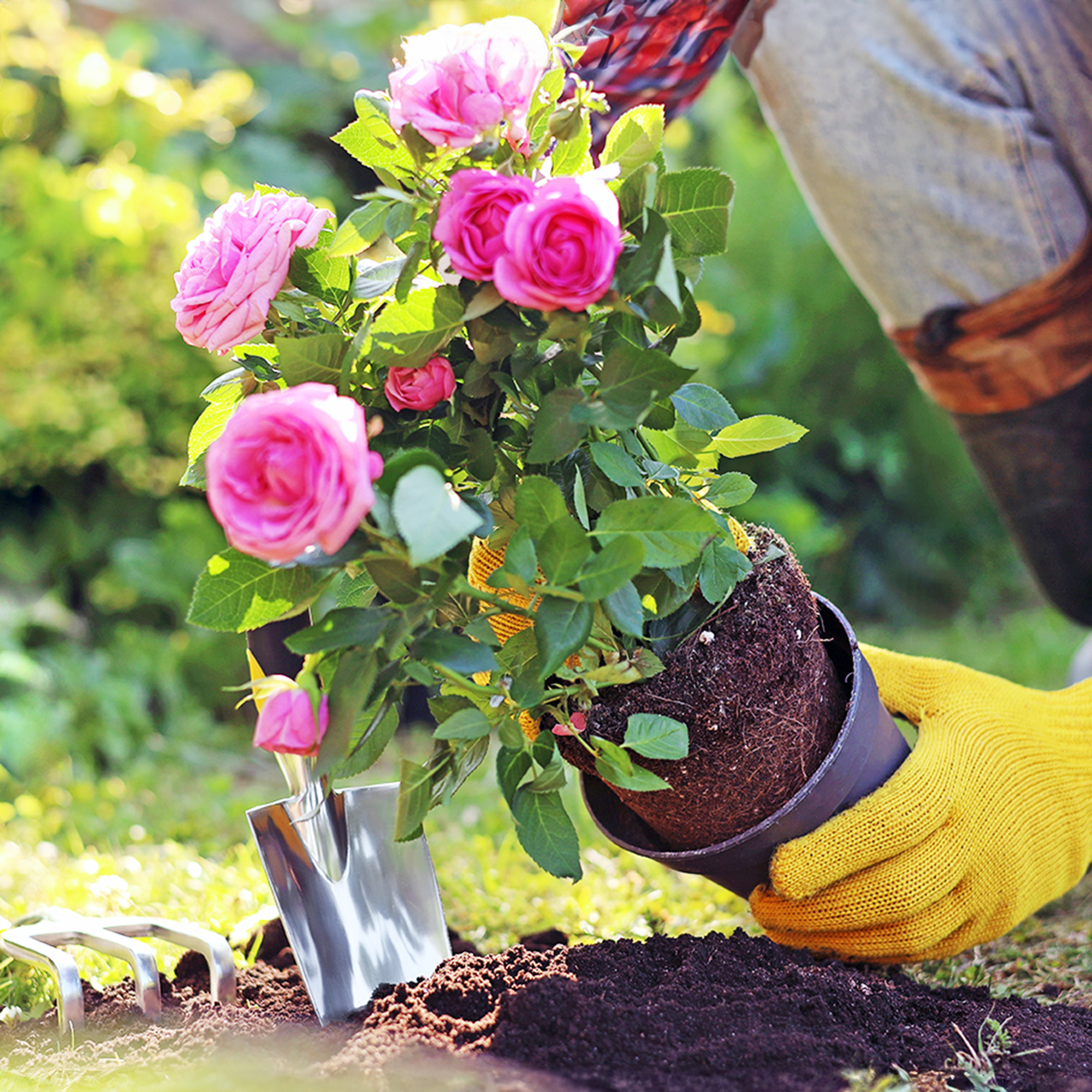 When To Plant Roses: The Best Time For Your Climate And Rose Type
When To Plant Roses: The Best Time For Your Climate And Rose TypePlant your roses at the right time and you will be rewarded with decades of glorious summer flowers – but get it wrong and you'll be crying over dead shrubs.
By Teo Spengler
-
 Spectacular Early Blooming Shrubs: 6 Sparkling Spring Flowering Bushes
Spectacular Early Blooming Shrubs: 6 Sparkling Spring Flowering BushesWant to kickstart your gardening year with dazzling spring flowering bushes for beds and borders? These unique early bloomers are sure to help you rise and shine!
By Teo Spengler
-
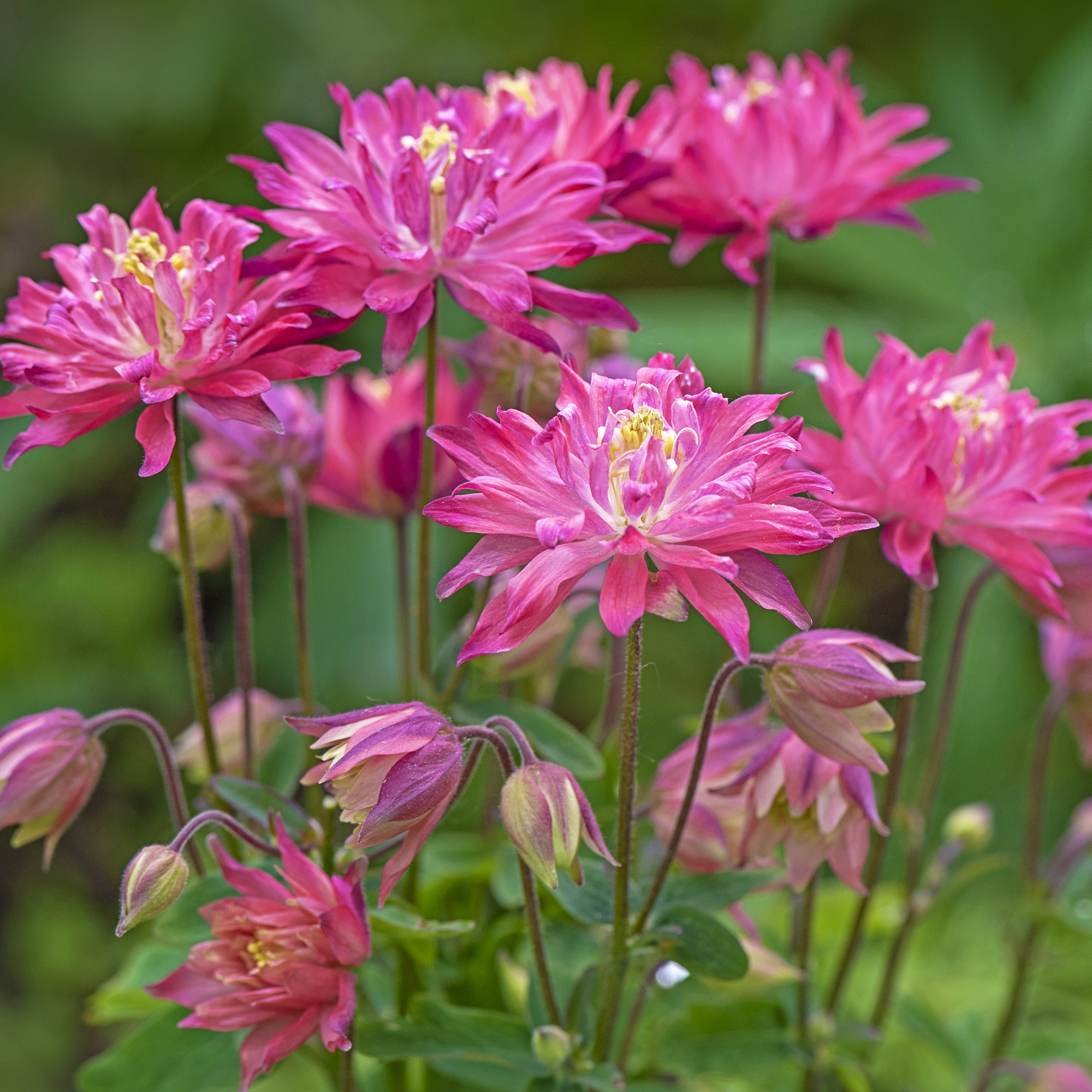 7 Shade-Loving Flowers To Start From Seed Now For A Stunning Summer Garden
7 Shade-Loving Flowers To Start From Seed Now For A Stunning Summer GardenTurn shady spots into vibrant new garden spaces with lovely and illuminating shade-loving flowers.
By Ellen Wells
-
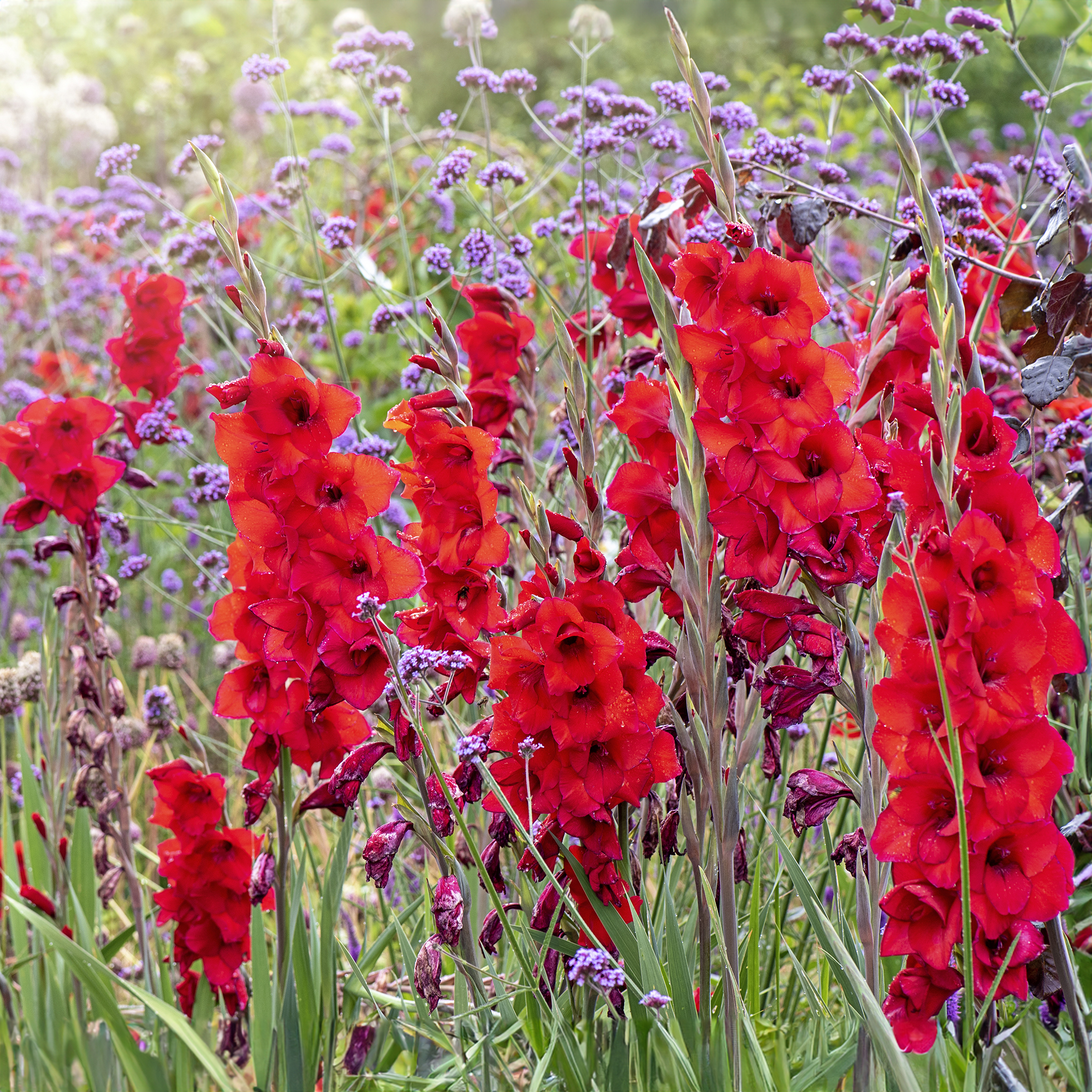 7 Summer-Blooming Bulbs To Plant In Early Spring: Don't Miss Months Of Glorious Flowers!
7 Summer-Blooming Bulbs To Plant In Early Spring: Don't Miss Months Of Glorious Flowers!Get a head start on stunning summer blooms with these easy-to-plant bulbs – act early and you will enjoy vibrant flowers that last for months on end.
By Mary Ellen Ellis
-
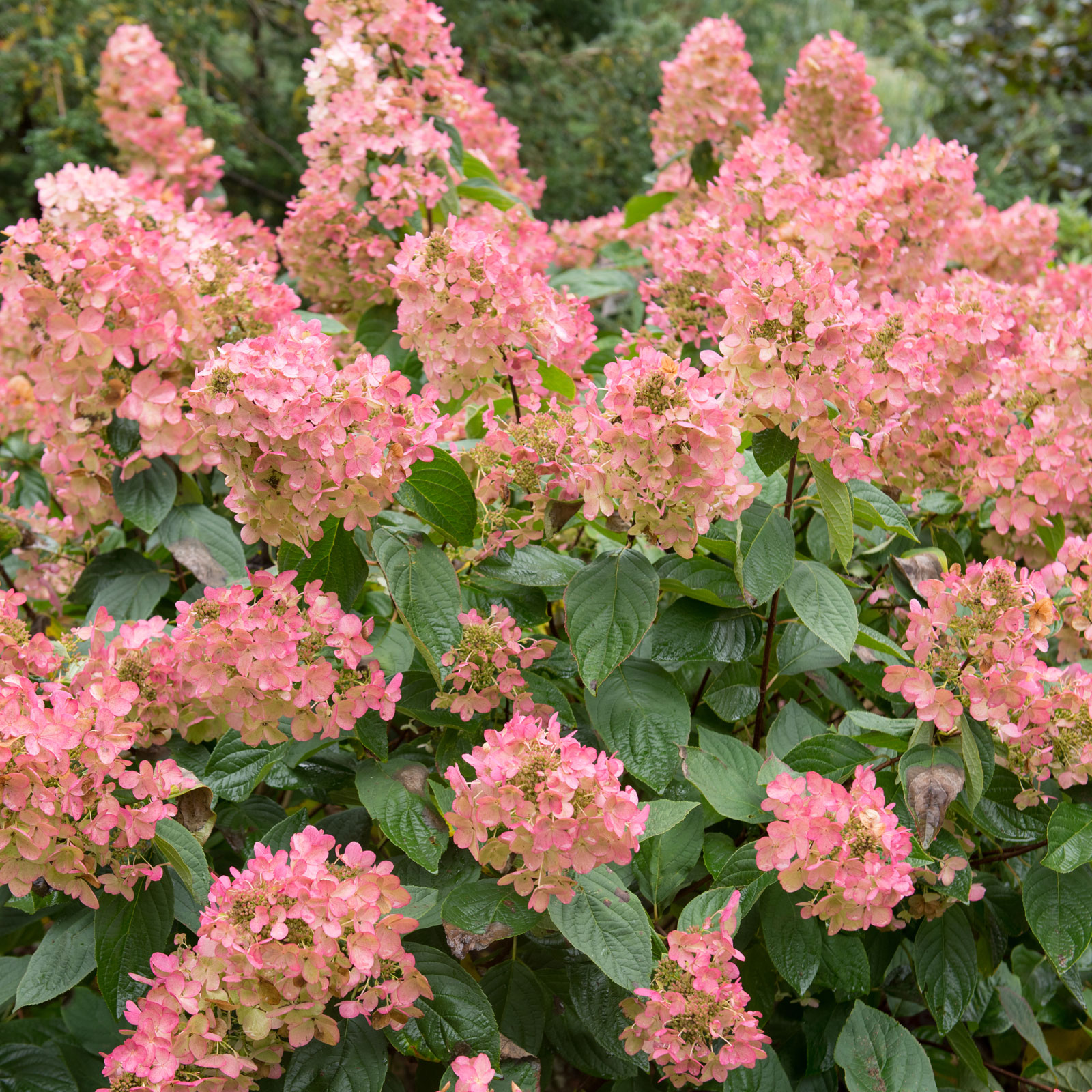 Quick Fire Hydrangea – The Elegant, Easy-Care Shrub Every Gardener Needs In Their Landscape
Quick Fire Hydrangea – The Elegant, Easy-Care Shrub Every Gardener Needs In Their LandscapeIf you’re after an early flowering panicle hydrangea that offers plenty of floral variety, the Quick Fire hydrangea goes big on visual dynamics from early summer to fall
By Tonya Barnett
-
 8 Rare Orchids That Make Stunning Houseplants – Some Are Surprisingly Easy To Grow
8 Rare Orchids That Make Stunning Houseplants – Some Are Surprisingly Easy To GrowDiscover unique orchids that will add exotic beauty to your home. Some make easygoing houseplants, while others offer a challenge for more seasoned growers.
By Melanie Griffiths
